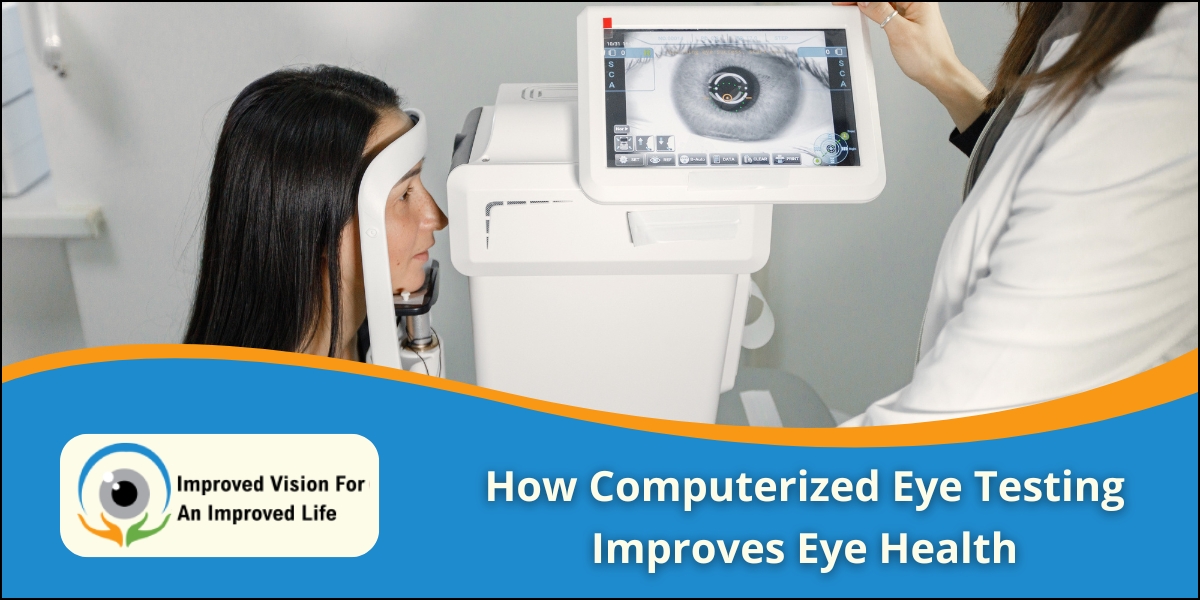In the realm of eye care, technology has revolutionized the way we diagnose and manage vision problems. Gone are the days of relying solely on traditional eye charts. Today, computerized eye testing offers a new level of precision, efficiency, and comprehensive analysis, leading to significantly improved eye health outcomes.
Key benefits of computerized eye testing to eye care
1. Unmatched Precision and Accuracy
Computerized tests, such as automated refraction and digital retinal imaging, provide incredibly detailed data. The automated phoropter measures how light focuses on your retina with pinpoint accuracy, leading to eyeglass prescriptions that are often more precise than those derived from manual methods. This means clearer, more comfortable vision for you.
2. A Comprehensive View of Your Eye Health
Perhaps the most significant advantage is the ability to see beyond just vision correction. Digital retinal cameras take a high-resolution photograph of the back of your eye (the retina, optic nerve, and blood vessels).
-
Glaucoma: By analyzing the optic nerve head.
-
Diabetic Retinopathy: By spotting tiny leaks from blood vessels.
-
Macular Degeneration: By examining the central part of the retina.
-
Hypertension: Through changes in the retinal blood vessels.
Many of these conditions show no early symptoms, making this proactive detection critical for preserving your sight.
3. Efficiency and a Comfortable Patient Experience
Computerized testing is swift and non-invasive. The process is streamlined, reducing your time in the chair. For patients, especially children or those who find traditional tests challenging, the automated and objective nature of the test can be less intimidating and more engaging.
4. Establishing a Digital Baseline
Your first computerized eye test creates a valuable digital baseline record of your eye health. On subsequent visits, we can compare new images to old ones, allowing us to track even the most subtle changes over time. This is invaluable for monitoring the progression of chronic diseases and assessing the effectiveness of treatments.
Early Detection is Key to Prevention
The core philosophy of modern eye care is prevention. Computerized eye testing is our most powerful tool in this mission. By identifying problems at their earliest, most treatable stages, we can intervene before any significant or permanent vision loss occurs.
Regular eye exams incorporating computerized technology are not just for those with poor vision; they are an essential part of everyone’s health maintenance routine.
If you are looking for a comprehensive eye exam in Moshi that leverages the latest technology for the sake of your long-term eye health, please don’t hesitate to schedule a consultation. Consult Dr. Vasundhara Kulkarni is a highly experienced and trusted Eye Specialist in Moshi, dedicated to providing advanced, compassionate eye care using state-of-the-art diagnostic technology for patients of all ages.
Frequently Asked Questions (FAQs)
1. What is a computerized eye test called?
Common types include automated refraction for glasses prescriptions and digital retinal imaging (or fundus photography) for photographing the back of the eye.
2. Is a computerized eye test accurate?
Yes, it is highly accurate. It provides objective, data-driven measurements that often lead to more precise prescriptions and earlier disease detection than traditional methods alone.
3. How long does a computerized eye test take?
The computerized components themselves are very fast, typically taking only a few minutes per eye. They are a part of a comprehensive eye examination.
4. Is the test painful or uncomfortable?
No, computerized eye tests are completely painless and non-invasive. For retinal imaging, you may see a brief, bright flash of light.
5. Can it detect other health problems?
Absolutely. The retina is the only place in the body where blood vessels can be seen directly, allowing us to detect signs of systemic conditions like diabetes, high blood pressure, and high cholesterol.

